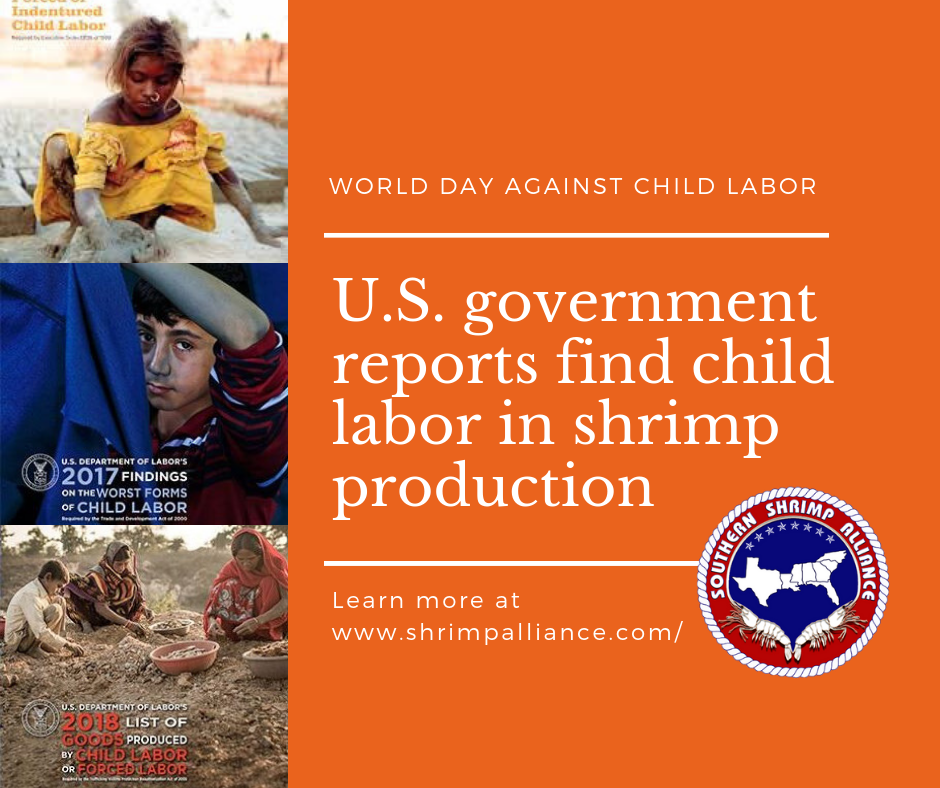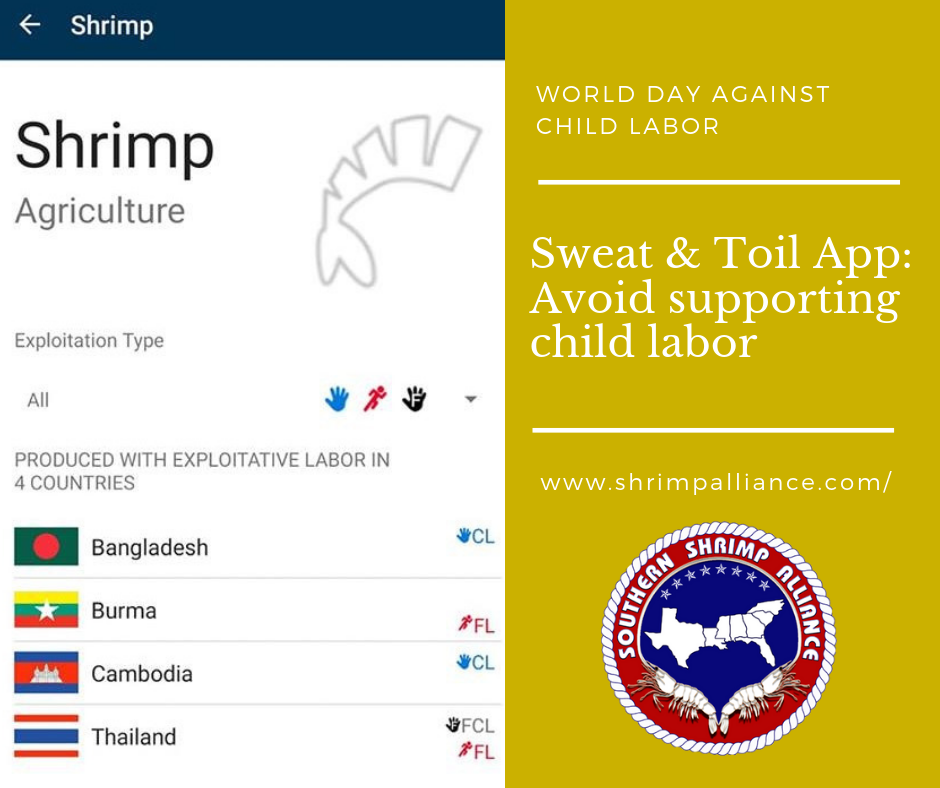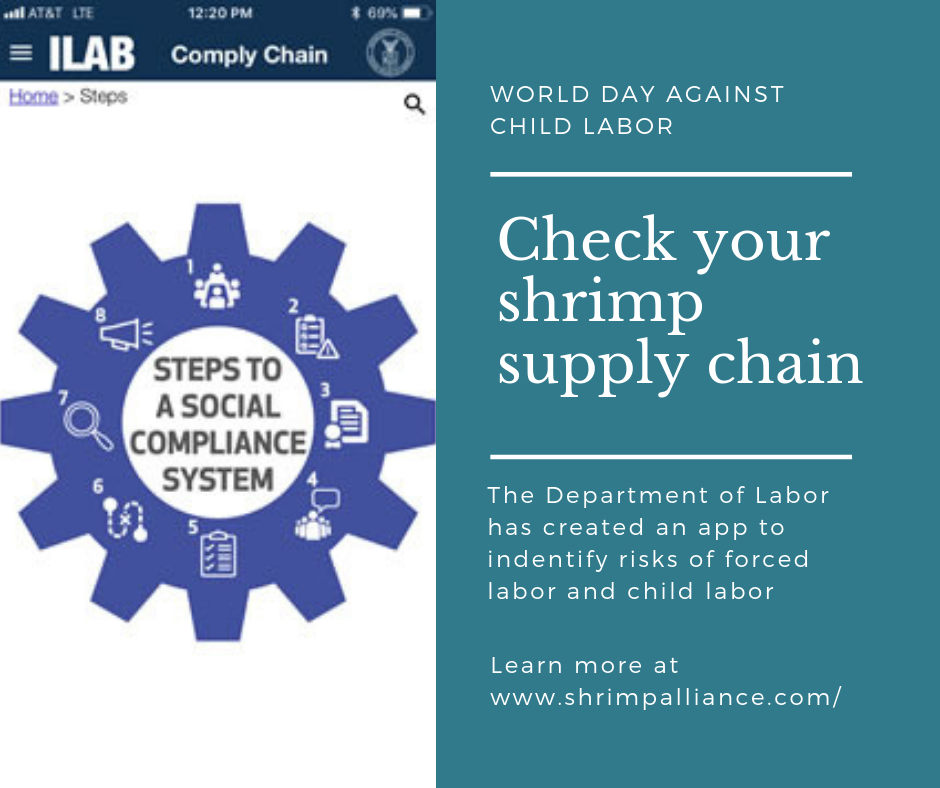
The U.S. government, other governments, and human rights organizations have all documented labor abuses in the shrimp supply chain in several countries. On June 12, the Southern Shrimp Alliance is promoting resources to help shrimp purchasers avoid sourcing from supply chains that use forced labor, child labor, and forced child labor as part of World Day Against Child Labor.
Resources on child labor and shrimp
The Southern Shrimp Alliance compiled and released in May 2019 government and third-party resources to enhance the ability of consumers, suppliers, restaurants, and retailers to evaluate the risk of purchasing shrimp from supply chains that use slave, forced, or child labor. As these data show, forced labor in shrimp production is limited to a small number of countries, but these problem countries supply significant volumes of shrimp to the U.S. market.

“One resource on our website is the Sweat & Toil app developed by the Department of Labor. We recommend people use it when making purchasing decisions on a variety of products, including shrimp,” stated John Williams, the executive director of the Southern Shrimp Alliance. “Many times, the cheapest product costs a lot more than consumers know.”
Sweat & Toil: Child Labor, Forced Labor, and Human Trafficking Around the World is a comprehensive resource developed by U.S. Department of Labor documenting child labor and forced labor worldwide. This app fits the information of the International Labor Affairs Bureau’s three flagship reports into one easy to use app.
Advocating for enforcement of child labor laws
In addition to helping shrimp purchasers avoid shrimp produced through slave or child labor, the Southern Shrimp Alliance continues to advocate for meaningful enforcement of U.S. laws designed to prevent this shrimp from entering the U.S. market.
U.S. law prohibits the importation of goods produced in whole or in part by slave, forced, or child labor. In 2016, Congress closed a loophole preventing this prohibition from being applied to most imported goods, including shrimp. Nevertheless, even after closing the loophole, enforcement of the prohibition by U.S. Customs and Border Protection continues to be weak.
U.S. law additionally prohibits the importation of seafood harvested through Illegal, Unreported, and Unregulated (IUU) Fishing. The Southern Shrimp Alliance continues to advocate for NOAA to administer this law so as to include forced labor in its implementation of the definition of IUU Fishing. The Seafood Import Monitoring Program, which took effect in January 2019, gives the agency the tools necessary to trace the origin of imported shrimp through its supply chain to effectively prevent shrimp (and other seafood) produced by users of forced, child, or slave labor from entering the U.S. market.
“U.S. laws against inhumane labor practices need to be enforced,” explains Williams. “Commitments to eliminate slave and child labor from the shrimp supply chain cannot depend entirely on purchasers voluntarily doing the right thing. We need enforcement to give purchasers a reason to think twice about going after the lowest prices available in the marketplace.”

About the Day
The International Labor Organization (ILO) launched the World Day Against Child Labor in 2002 to focus attention on the global extent of child labor and the action and efforts needed to eliminate it. Each year on 12 June, the World Day brings together governments, employers and workers organizations, civil society, as well as millions of people from around the world to highlight the plight of child laborers and what can be done to help them. Learn more at https://www.un.org/en/events/childlabourday/
